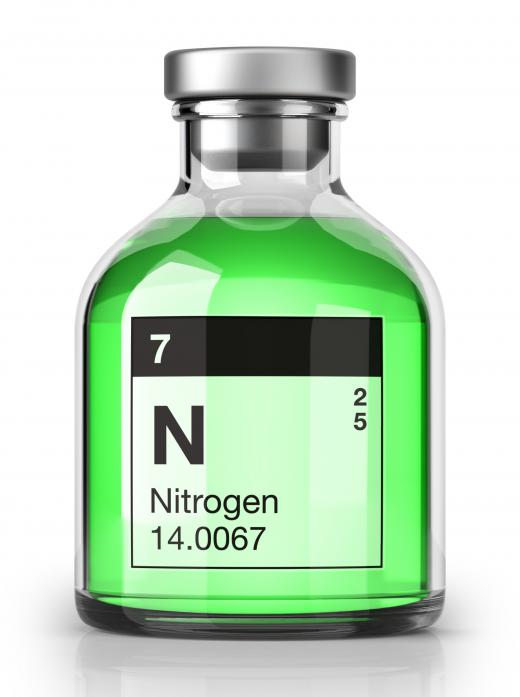What is an Organic Chemical?
 Karyn Maier
Karyn Maier
An organic chemical, also referred to as an organic compound, is defined as being constructed of molecules that possess carbon-based atoms. Specifically, it is composed of carbon atoms attached to hydrogen atoms, together with a variety of other elements from functional groups, such as oxygen, nitrogen, sulfur, etc. Usually, an organic chemical is covalently bonded, meaning that electrons are shared between atoms. This characteristic is why organic chemicals can be structured in a variety of long chains and rings and form bonds with the great stability.
As the name implies, an organic chemical exists naturally, albeit in a vast variety of combinations. In fact, they occur in all living organisms and form the core of all biological processes. However, organic compounds also govern numerous organic chemical reactions. Two of the simplest reactions that occur are combustion and saponification, or the hydrolysis of fats to make soap. However, certain reactions can also produce new organic substances, including those used to make synthetic pharmaceuticals and the raw materials needed to manufacture various consumer goods.

While the study of organic chemistry has escalated to initiating organic reactions outside of living organisms (in vitro and the synthesis of new chemicals, the field had modest beginnings. In fact, up until the mid-19th century, scientists believed that the “vital force” of organic compounds could not be duplicated from lifeless material. However, this way of thinking began to change when chemist Friedrich Wöhler produced urea from ammonium cyanate in 1828, the first known synthesis of an organic chemical from a non-organic source. By the 1890s, the birth of the pharmaceutical industry was celebrated with the production of aspirin from acetylsalicylic acid by a German drug and dye company called Bayer.

Today, organic compounds are generally categorized as being either natural or synthetic, although subclassifications also exist. Natural organic compounds are derived from living organisms, i.e, plants or animals. They include many vitamins, carbohydrates, fats, amino acids, enzymes, and alkaloids. Synthetic organic compounds are produced by chemical reaction, whether the original material occurs naturally or not. In addition to man-made materials, such as plastic, examples of inorganic compounds include sulfides, oxides, and minerals.

Since organic chemicals exist in all living things, it may seem ironic that the Earth is primarily composed of inorganic materials. The planet’s crust, for example, contains mostly oxides, which are considered inorganic even though they contain carbon atoms. Other carbon-based compounds exist in nature, but are still termed inorganic. Some examples include cabonates (salts) and carbon allotropes (diamonds and graphite).
AS FEATURED ON:
AS FEATURED ON:















Discussion Comments
If organic chemicals (unless synthetically produced) only come from living organisms then why
does the moon Titan contain oceans of organic natural gas, and other organic chemicals, so how did all those dead plants and dinosaurs get all the way up there, and how did the first life form happen?
I need to do an assignment on this subject. When I'm looking up stuff online about organic chemicals, I see different categories like bioorganical chemicals, physical organic chemicals, synthetic organic chemicals, organometallic chemicals and some others.
What are these?
I had read about Friedrich Wöhler's discovery before. From what I remember, most scientists and chemists at the time ignored his findings. He wasn't really appreciated until much later.
I think it was because chemists thought of organic and inorganic chemicals to be completely different. The article also talked about this.
I would like to know something about Wöhler's findings. If it is possible to make an organic chemical from an inorganic one, can the opposite be done also? Can we change the urea back to ammonium cyanate?
In biology class, we are studying about how plants and animals in nature communicate and work with each other and also defend themselves from each other by using organic chemicals.
For example, plants can tell when there is an insect trying to eat their leaves from the insect's organic chemicals. The plant can also use its own organic chemicals to attract a predator of that insect to protect itself.
I think this is really amazing. Organic chemicals and compounds in nature are sort of like ID cards for plants and animals. It's works as a tool for communication too.
Post your comments